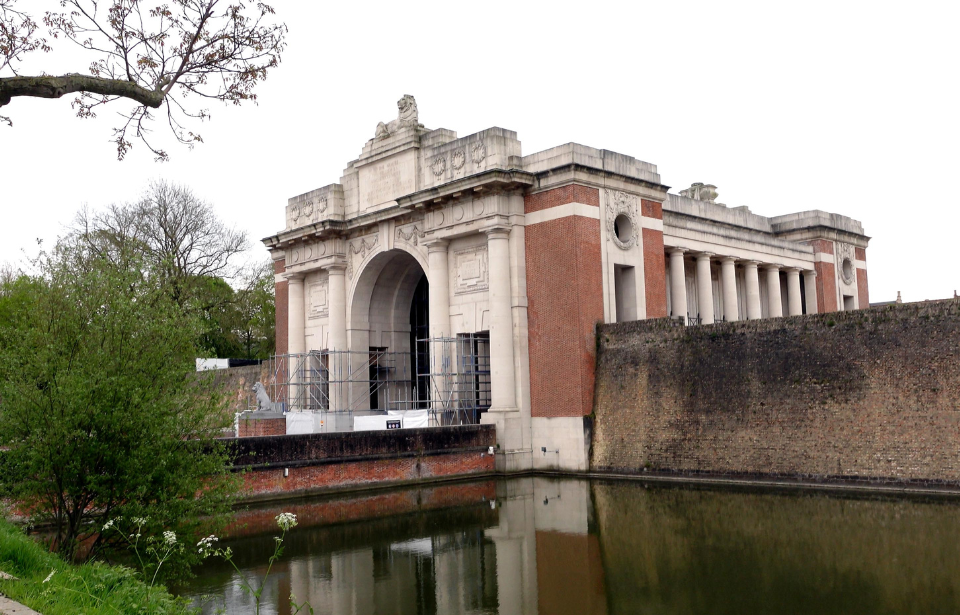After a century of battling the elements, the Menin Gate in Belgium is about to get some well-earned rest and recuperation. The monument dedicated to the fallen of the engagements that occurred around the Belgian city in World War I is to be shrouded in scaffolding and weather-proof wrapping for a two-year restoration project.
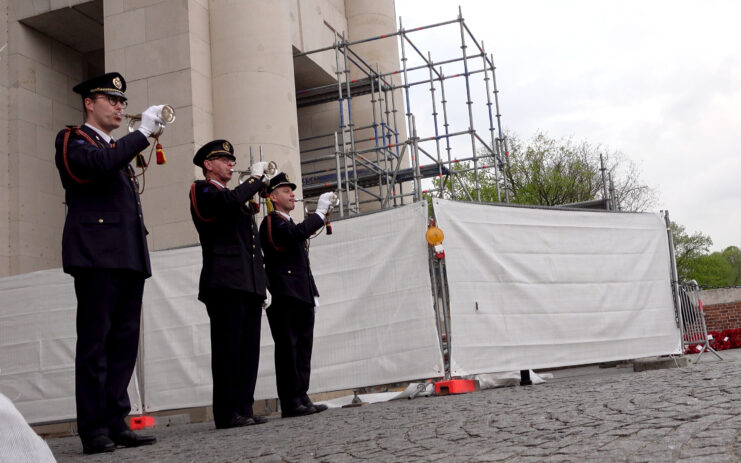
The restoration work has just started in the city, where a daily “Last Post” ceremony is held each evening, rain or shine. Traffic is halted at 8:00 PM nightly and the ceremony occurs under the middle of the arch, with the bugle calls reverberating off the stone walls and roof.
Now, it’s been moved in front of the East entrance.
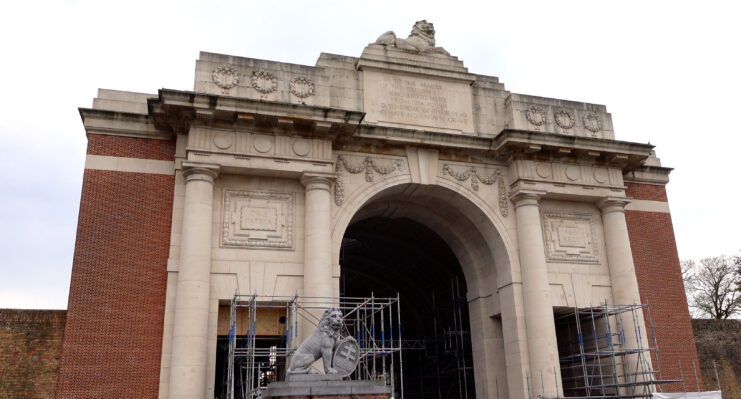
Some parts of the memorial have weathered well, but where damage has occurred it will need to be restored or replaced. Built of limestone and brick, some materials and mortars will need to be replaced to improve general waterproofing. The roof is planned to be mostly rebuilt, becoming environmental green. This is thought to improve its life by two or three times!
One major factor that had to be addressed is that the Menin Gate is a key entryway into Ypres, so most of the work will carry on with the road still very much in use – although only one way.
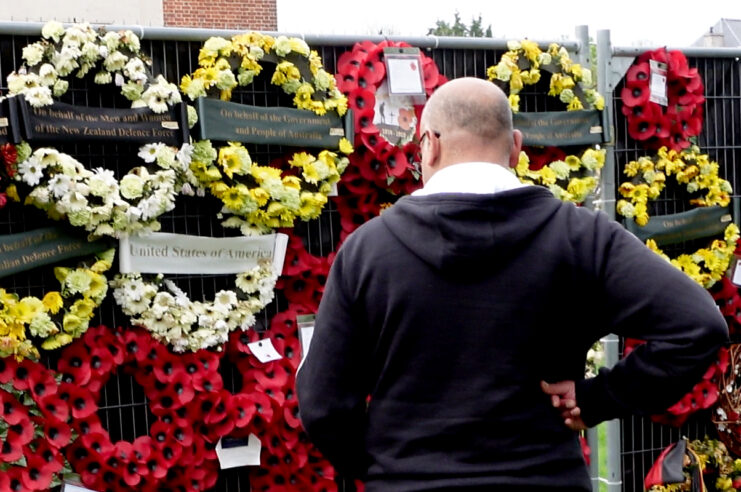
The museum and visitors center in Arras is where you can see some of the work carried out by the CWGC, be they carpenters, metal workers or stone masons, plus the gardeners and horticultural staff who tend some of the 200 cemeteries around this immediate area of Flanders. Those looking to visit the area can prepare for their trip via Flanders’ tourism website.
All around the world, the CWGC looks after 23,000 cemeteries and war memorials. There’s such a concentration of graves in this specific region because the two World Wars fought across almost the same ground in Flanders. In WWI, there were three battles of Arras, with the last major engagement being Passchendaele.
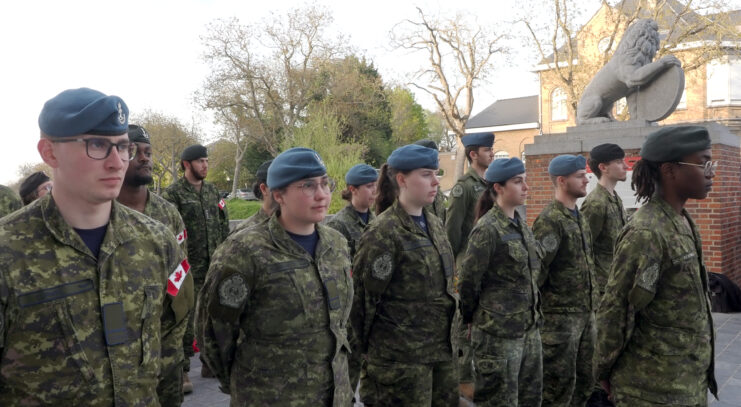
Menin Gate was chosen because of the thousands of soldiers who would have passed through on their way to the battlefields in this sector called the Ypres Salient. It commemorates the Australian, Canadian, Indian, South African and British troops who died in the Salient.
British casualties prior to August 16, 1917 are listed there. During that period, some 450,000 soldiers were killed, with the battle lines moving forward and back only four miles during the whole conflict. In the latter stages, it was a muddy hell, even stopping tanks! Although, today, there are few signs of that… Just trimmed neat fields of corn and crops, with the trees and hedges fully returned.
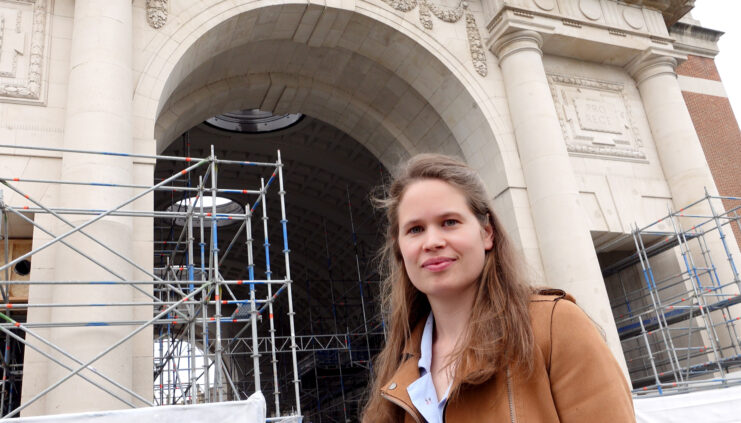
Later deaths from the UK and New Zealand from after that date are named on the huge memorial at Tyne Cot. Coincidentally, it was the site that marked the furthest point reached by the Commonwealth forces in Belgium until nearly the end of the war. Kiwi casualties after August 16, 1917 are commemorated on memorials at Buttes New British Cemetery and Messines Ridge British Cemetery, all very close to Ypres.
Designed by Sir Reginald Blomfield, the memorial was unveiled by Lord Plumer on July 24, 1927.
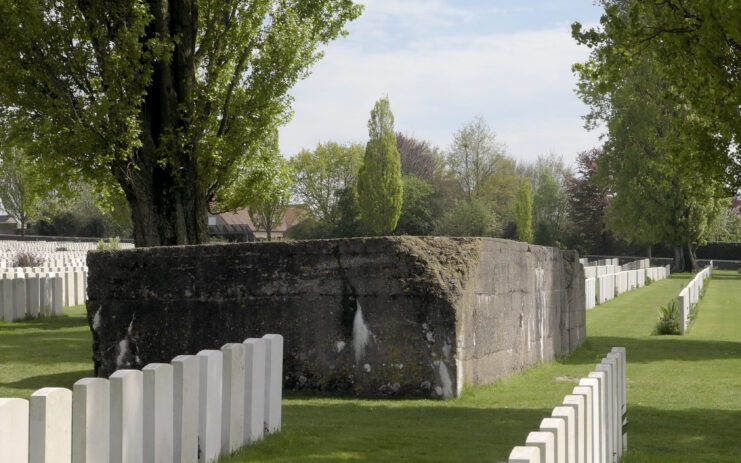
Some countries, like the United States, decided after the war to repatriate their fallen – and many were returned. In the end, 43,909 bodies were brought back to America. One funeral ship that docked in Hoboken, New Jersey on May 23, 1921 was met by President Warren G. Harding as he paid tribute to the 5,000 bodies that arrived onboard the USAT Wheaton.
